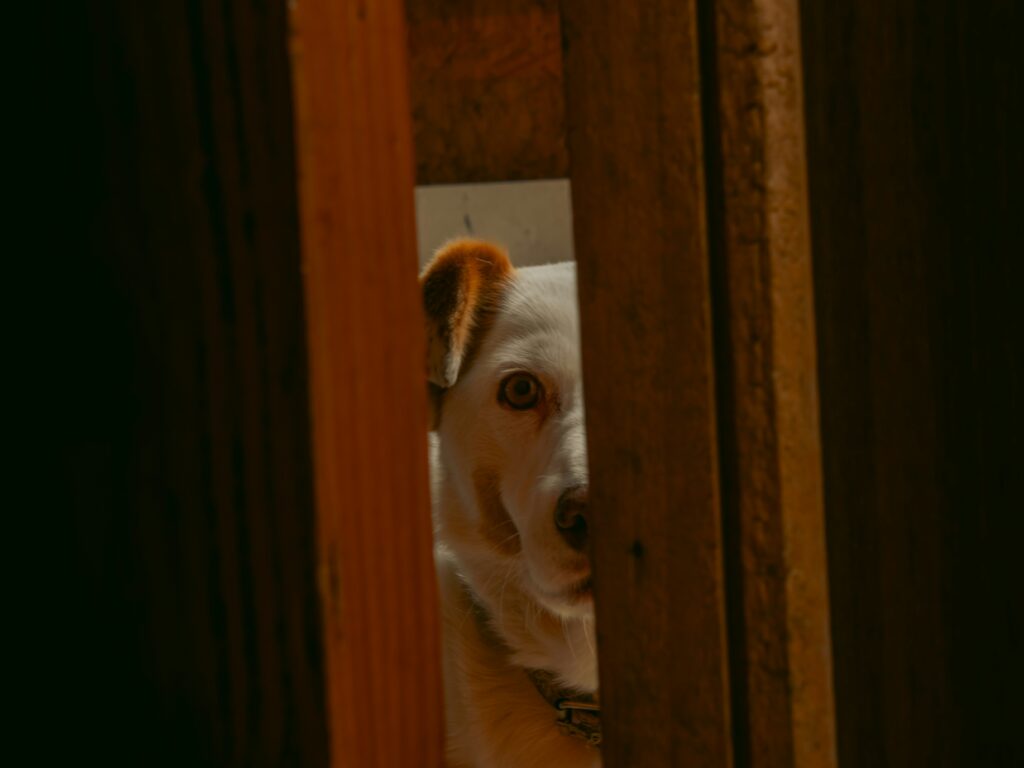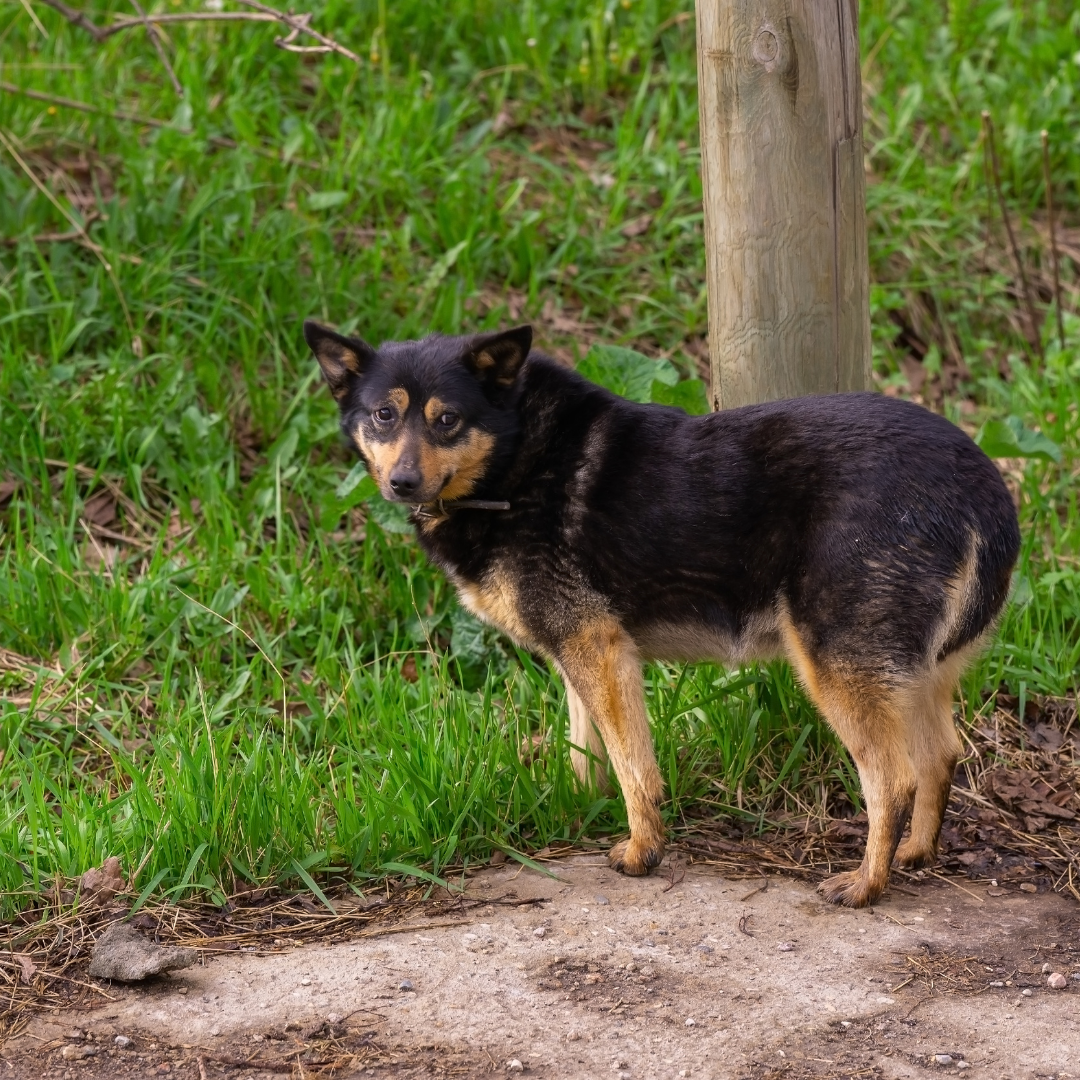April 23, 2025
Anxiety in dogs is more common than many pet owners realize. Whether it’s fear of loud noises, or general nervousness around new environments or people, anxiety can significantly affect a dog’s quality of life. Fortunately, with patience, understanding, and the right techniques, you can help your anxious dog feel more secure and confident. These are our top tips on how to train an anxious dog!

Understanding Canine Anxiety
Before diving into training strategies, it’s crucial to understand what anxiety looks like in dogs. Common signs of anxiety include:
- Nervous body language: turning away, lip licks, yawns, ears pinned back, tight face
- Easily startled by sounds
- Excessive barking or whining
- Destructive behavior
- Pacing or restlessness
- Drooling or panting
- Attempts to flee
- Aggression or fear-based reactivity
Dogs can develop anxiety for various reasons: trauma, lack of socialization, genetics, or medical conditions. Identifying the root cause is a vital first step in addressing the issue effectively.
Step 1: Visit the Veterinarian
Before beginning any training, rule out medical issues. Some health problems can mimic or contribute to anxiety, such as thyroid imbalances or chronic pain. A thorough vet check ensures you’re treating the right problem.
Step 2: Create a Safe Environment
Provide your dog with a consistent routine and a safe space they can retreat to when feeling overwhelmed. This could be a quiet room or a crate filled with familiar bedding and toys. Predictability reduces stress and helps dogs feel more secure.
Step 3: Use Positive Reinforcement
Reward-based training is the most effective and humane ways to train an anxious dog. This method focuses on reinforcing desired behaviors with treats and praise. Avoid punishment-based training, as it can worsen anxiety, cause aggression, and erode trust.
When your dog remains calm in a previously stressful situation, immediately reward them. Over time, they will begin to associate calm behavior with positive outcomes.
Step 4: Desensitization and Counterconditioning
Desensitization involves gradually exposing your dog to the anxiety trigger at a low level, increasing exposure as they become more comfortable. Counterconditioning pairs the trigger with something positive, like a treat, to change the dog’s emotional response.
Step 5: Manage Triggers
While training is ongoing, avoid unnecessary exposure to known triggers. If your dog is afraid of thunderstorms, use white noise machines, calming music, or create a cozy area during storms.
Similarly, during fireworks or thunderstorms: speak to your vet about medicine that can help them during these acute events.
Step 6: Provide Mental and Physical Stimulation
Regular walks, playtime, and mental enrichment activities like puzzle toys can help reduce overall anxiety levels. Training sessions themselves also serve as mental stimulation and can strengthen your bond with your dog.
The old adage “a tired dog is a happy dog” isn’t always true. Consider how exhausted you feel after a stressful and overwhelming day at work. Exposing your dog to stressful but exhausting exercise (like attending a party, busy park, or street festival) is not going to yield positive results. Instead, focus on exercise that is naturally enriching to dogs: sniffing, barking, digging, running.
Step 7: Teach Relaxation Techniques
Training your dog to settle on cue is invaluable. Start by encouraging your dog to lie on a mat or bed. Use a cue like “relax” or “settle,” and reward calm behavior. Gradually increase the duration and add mild distractions.
This technique is especially helpful in managing anxiety in new or chaotic environments.
Step 8: Consider a Dog Behavior Specialist
If your dog’s anxiety is severe or you need more guidance with how to train an anxious dog, consult a local professional dog trainer. Modern Manners Dog Training in York, PA is certified in positive reinforcement methods and experienced in working with dogs who have anxiety.
In some cases, a veterinarian may recommend anti-anxiety medications to complement behavior modification training.
Step 9: Be Patient and Consistent
Training an anxious dog takes time. There will be setbacks, and progress may be slow. Celebrate small victories and remain consistently positive and gentle with your anxious dog.
Tools and Products That May Help
- White noise machines: Mask triggering sounds.
- Interactive toys: Help keep the dog mentally engaged.
- Window film: Prevent reactions from occurring habitually in the house.
Real-Life Success Story
Consider Stormy, a rescued border collie who barked and lunged at strangers, cars, and other dogs on walks. Her owner, Leah, began training with Modern Manners Dog Training. We focused on gradual desensitization and counterconditioning to her triggers and training games. After several months, Stormy could enjoy walks without barking and reactive episodes at people, cars, and other dogs.
Final Tips to Train Your Anxious Dog
Training an anxious dog can be challenging, but it’s one of the most rewarding things you can do as a pet owner. With love, patience, and the right techniques, your dog can learn to navigate the world with confidence. Remember, every dog is unique, so while your dog may not be cut out to be a therapy dog or enjoy visiting busy cafes or brewery patios, they can still have a wonderful life filled with love and adventures. The journey may be long, but the results are truly worth it.
If you need more help with training your anxious dog, contact our training specialists and see how we can help your pup!
Leave a Reply Cancel reply
Frustrated with reactive outbursts on walks?
Wondering if you will ever enjoy a "normal" walk with your dog?
you need this free guide!
follow along on instagram @modernmannersdogtraining
privacy policy
design by little hound creative
